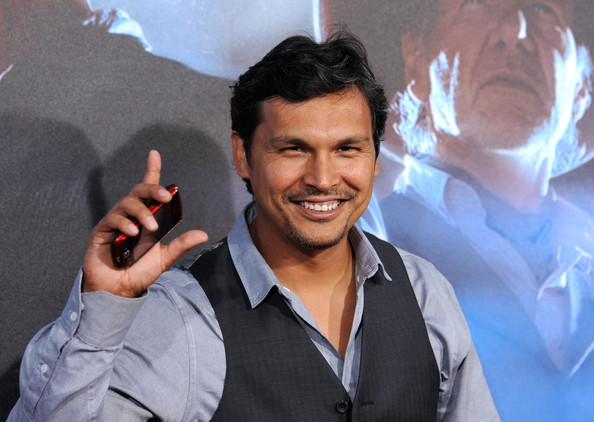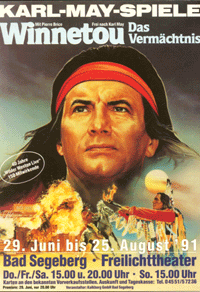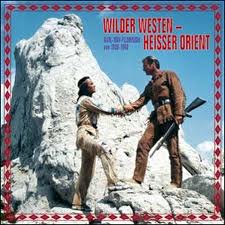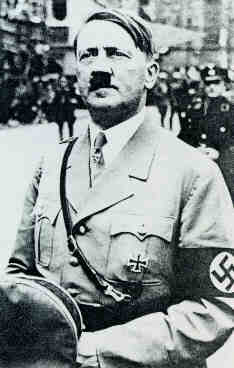Germany's Obsession With American Indians Is Touching—And Occasionally Surreal
By Red Haircrow
Michaelis is not the only German who likes to pretend he is an Indian. Hobbyism or Indianism, the desire to copy Native Americans is a puzzling and persistent passion for many Germans. Every year, there are dozens of pow wows arranged, managed and run by non-Natives at which, Der Spiegel reported, “thousands of Germans with an American Indian fetish drink firewater, wear turquoise jewelry and run around places like Baden-Württemberg or Schleswig-Holstein dressed as Comanches and Apaches.” There are several German Wild West theme parks like Eldorado, a popular vacation spot featuring staged cowboys vs. Indians or small reenactments of notable battles, as well as dancers performing choreographed sets that combine dance styles and forms.
Michaelis’s life as an “Indian” mostly consists of emulating Natives who roamed the Great Plains of North America over two centuries ago, and now that he’s retired, he spends the majority of his time making and selling Native-inspired trinkets and small leather goods to sell. Some Germans don’t limit their dress-up to their backyards. They periodically put away their mobile devices and other modern tools for the weekend and recreate tipi encampments, dress in animal skins and furs, prepare and cook food over an open fire and address one another by Indian-sounding names such as White Wolf, all while discussing their feelings of invoking the spirit of what it is to be an Indian. There are also websites like Tipis.org, which declares itself “dedicated to all the people around the world who have ever studied the American Indian tipi and wanted to live the life of freedom on the Plains that this structure represents.” Posted there are photos of Europeans who have abandoned their own culture, either permanently or occasionally, to “live like Indians”—or what they have rather fancifully imagined what living like an Indian entails. Some of these people actually roam the countryside wearing buckskin, living off the land and practicing their peculiar brand of American Indian religion.
An estimated 40,000 Germans pay dues at more than 400 clubs so that they can pretend to be Indians. Some of these clubs serve a dual purpose because it is illegal in Germany to fire a rifle, ride a horse or camp unless you belong to a registered club and engage in those activities on club premises. Some of the more popular ones are the Cheyenne Indian Club, Western Club Freising and the Wild West Club. The Cowboy Club of Munich, founded in 1913, is the oldest club of its kind in Germany, and regularly hosts events in which members dress up and act as they believe Indians did hundreds of years ago, insisting upon what they believe is authenticity, although they call themselves rote Indianer—red Indians. They organize pow wows; make, sell and trade handiwork; and drum, sing and dance. Some even take lessons on horseback riding or shooting a bow and arrow.
Krisztina Szabo, who was interviewed for Linda Holley’s book, Tepees, Teepees and Tipis: History and Design of the Cloth Tipi, told the author, “Our camp is always in summer, in July for two weeks. During this time we live in tipis, we wear only Indian clothes. We don’t use technology, and we try to follow Indian traditions. We have those [pretending to be] Lakota, Oglala, Blackfoot Blood, Siksika, Pawnee…and we go on warpath against each other day and night, anytime at all. In two weeks, every tribe can fight each other. We don’t know when somebody will attack or when they will come to steal our horses. And the battles are always exciting, too. I really enjoy them.”
Adults playing dress-up might seem vaguely comic, but these people are shockingly earnest in their love for Native culture, regardless of how poorly many of them understand it. Many even acknowledge that their events—and even their costumes—aren’t about Native American life as it is today, or even was 200 years ago. They just consider their dress-up to be good fun and do not mean to give offense.
Some champions of Native culture don’t find these hobbyists funny or benign. Susan Marcia Stan, who wrote an essay about the impact of Native misrepresentation in children’s literature says, “ ‘Playing Indian’…assumes that being Indian is something that can be put on or taken off at will and completely ignores the cultural heritage of Native people.”

The source for these imitations:
Julian Crandall Hollick is a writer who has interviewed many German and European hobbyists and aficionados. “These are intelligent men and women—computer programmers, truck drivers, interior decorators—for whom the American West offers another identity necessary for their mental stability, a means of going back into history to make sense of as world in which they often alienated; another way for Man to renew the search for identity and his relationship with Nature,” he has written. “Of course, many ordinary Europeans have now visited the [American] West. They know full well their dream is about an America that no longer exists, may never have existed. But they are content with the myth because it fulfills [personal] needs.”
For some it goes far beyond weekend fun or a chance to adopt certain Indian values or beliefs; these hobbyists don’t limit themselves to occasionally procuring authentic garments, decorative items and handicraft projects. Such is the case with the self-proclaimed chief, Gerhard Fischer, known as Old Bull, who heads the Karl May fan club, which hosts a festival on the author’s birthday. Fischer and his kind have romanticized long-gone Native Americans to a degree that they think “latter-day” Indians are poor examples of their ancestors—whom they revere as noble savages. Old Bull’s followers believe Natives today are being perverted by modern culture and that they, not Native Americans, are preserving Native culture.
Instead of empathizing with the very real struggles of Natives now living in North America, these “new Indians” of Europe see the societal problems, substance or alcohol abuse, poverty and internal difficulties within some indigenous communities as evidence supporting their conclusions. They believe their activities are keeping Native American traditions alive, because—they believe—most Natives neglect or do not appreciate their own heritage.
The website for the “Indians and Mountain Men” club declares that “the purpose of the club is to maintain the customs and traditions of the North American Indians and Mountain Men.… We call ourselves practicing anthropologists and take our hobby and the related work, either in theoretical or practical shape, very seriously. The tipis, all the clothing, as well as all items are lovingly made by hand and decorated by us. Many of us even tan the leather itself and sew it together with animal sinews, as the Indians did before. We practice in many skills and craft techniques of this cultural group, and even in songs and dances we strive to achieve the utmost authenticity.”
David Redbird Baker, Ojibwe, told Noemi LaPinto for an article in the Canadian monthly magazine, Alberta Views, that when he first came to Germany, he was amused by the hobbyists, but his feelings changed as he spent more time amongst them. “They take the social and religious ceremonies and change them beyond recognition….They’ve held dances where anyone in modern dress is barred from attending—even visiting Natives. They buy sacred items like eagle feathers and add them to their regalia.” In his opinion, these hobbyists, by claiming the right to improvise on the most sacred rituals, have begun to develop a sense of ownership over Native culture.
I read Winnetou, the first book in May's Old Shatterhand series, and debated it here. It's basically a white supremacist fantasy, with a Jesus-like Superman saving a few good Indians from a horde of bad ones. No wonder Adolf Hitler liked the books so much. They provide ample ammunition for exterminating the degenerate heathen "redskins"--i.e., most Indians.
For more on German hobbyists, see Germans Love Westerns and Chief Wahoo in Germany.
Below: "May’s novels had little basis in fact, which may explain their worldwide appeal."








